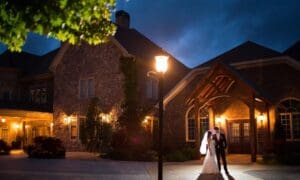As Memorial Day approaches, I am preparing to travel to Germany for the dedication of a World War II memorial commemorating the deaths of seven B-24 Liberator bomber crew members. Their story reminds us why we celebrate this special day.
The bomber crashed during a combat mission on Feb. 16, 1945, just before the war’s end. The crew’s average age was 22. They were from the 783rd Bomb Squadron, 465th Bomb Group (Heavy), Fifteenth Army Air Force.
Many don’t know or remember the war’s cost in human lives. The 15th AAF alone had 1,756 B-24s and 624 B-17s shot down in combat from November 1943 to May 1945. Losing half their aircraft, 20,430 bomber aircrew were killed, wounded, missing or taken prisoner. Each was someone’s son, husband, brother, father or friend. Each has a story.
The memorial will be special to our family. My mother’s only brother, 2nd Lt. Leslie Peyton Turner, the bomber’s navigator from East Point, Ga., died in the crash. Peyton’s father had a heart attack on learning of his death, dying three months later. Peyton’s mother died when he was young. My mother and her sister were too heartbroken to speak of Peyton’s death or his life before the war.
Peyton graduated from college just after the war began. In 1943 he volunteered for the rapidly expanding Army Air Corps. He knew his duty. He planned to go to war, come home, marry his fiance, and begin law school in Atlanta — a dream cut short by death.
My brother, Tom, from Atlanta, now living in Washington, D.C., and working as a city political commentator for NBC Channel 4, named his only son Peyton. He carries the name proudly.
My own son serves with the U.S. Army in Afghanistan. My oldest grandson just returned. Two other grandsons are with Army and Marine units on the home front. My sister served in the Air Force and my brother in the Navy. Others in our family have faithfully served or are serving in all branches of the military. Their service continues Peyton’s heritage.
But Peyton is just one story. I have encountered other families of the bomber crew with their own stories. The family of pilot 2nd Lt. Bruce Lyon, also killed in the crash, dedicated a redwood grove in California in memory of their beloved son. Dr. Dick Lyon, Bruce’s older brother, still going strong at age 96, dedicated a medical laboratory in Bruce’s memory and fondly remembers precious pre-war moments growing up in days long past.
Two families had fathers that survived the crash. Staff Sergeant Owrie Brown, the flight engineer, was thrown from the exploding aircraft and parachuted only to be captured and held as a POW until the war’s end. His son, Gerry, was born years later on Feb. 16, the anniversary of the crash. He has shared the information passed down from his father. He is a captain with United Airlines, flying the new B-787.
Al Honey was one of the tough young sergeants who manned the machine guns to protect his bomber from enemy fighters. After his release from capture, he spent years locating the crash and burial sites of fellow crew members. Anne Honey Richmond, his daughter, has many priceless memories of her dad’s devotion to the memory of his crew. We are searching for other family of the crew to learn their stories.
An unsung, yet unnamed hero is the wartime German Catholic priest of Haselbach. After the crash, he gathered the remains of the seven deceased crew members and buried them in Haselbach’s village cemetery, defying orders of Nazi officials and risking his own life.
After the war, four of the crew were reinterred in the American Cemetery at Saint Avold, France. The others were returned to loved ones, reviving their sorrow.
How the memorial came about is its own special story. After studying at Regensburg University on a Fulbright scholarship, U.S. Air Force Colonel Tracy Popey and her husband, Bob, purchased a farm in the village of Haselbach. They soon learned a U.S. bomber had crashed there.
When Haselbach’s mayor suggested erecting a memorial to the downed crew, Col. Popey’s family quickly agreed. A local stone mason, instrumental in building the memorial, was a 13-year-old boy and had been the first to arrive at the crash site. I hope to hear his account firsthand.
Soon afterwards, Col. Popey made contact with other family members of the crew and plans the memorial dedication in July 2013 just as she retires from the Air Force. Her birthday is also Feb. 16.
Sixty-eight years after the end of the war in Europe, the sacrifice and service of these seven military heroes and their two surviving aircrew are being remembered anew.
The memorial and the crew’s legacy to their families and new generations of Americans and Germans embody the very meaning of Memorial Day — lives given that we may know freedom from tyranny.
We have a duty to remember them. Their story lives on!
[Ed Sherwood is a retired Army officer with Vietnam combat experience born in Atlanta now living in Peachtree City, Ga.]











Leave a Comment
You must be logged in to post a comment.